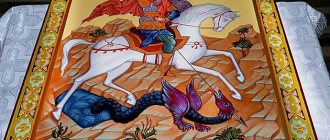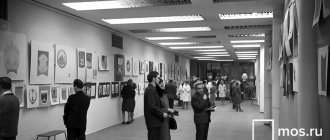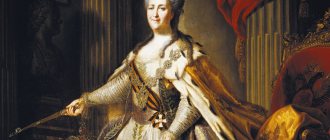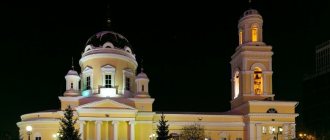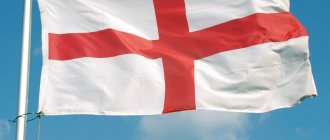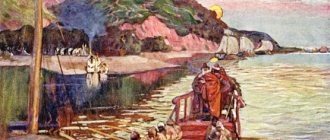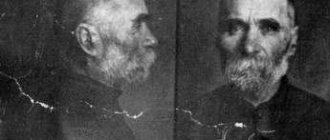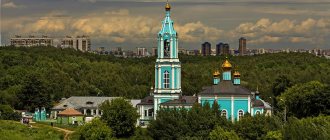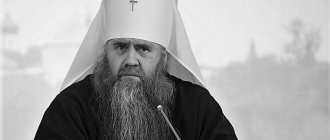"Save me, God!".
Thank you for visiting our website, before you start studying the information, please subscribe to our Orthodox community on Instagram, Lord, Save and Preserve † - https://www.instagram.com/spasi.gospodi/. The community has more than 60,000 subscribers. There are many of us like-minded people and we are growing quickly, we post prayers, sayings of saints, prayer requests, and timely post useful information about holidays and Orthodox events... Subscribe. Guardian Angel to you!
The image of the Great Martyr is considered one of the most revered shrines in the Orthodox Shrine, and it also personifies the intercessor for believers whose life has anything to do with military affairs, but he can also protect landowners. The divine face can be found on some city flags and even on coins.
The shrine of the Great Martyr can be addressed in a prayer service to all Orthodox Christians who have connected their lives with the defense of their homeland. They are called to the Saint to petition for intercession in military conflicts, and parents whose sons have been called to service also pray before the face, so that the image will protect them from all difficulties, and the service will go well.
In this article you can find out how the shrine helps and what the significance of the shrine is, what they pray for to the icon of St. George the Victorious, the day of celebration, prayers to the image and more.
- Prayer for help in work
How does the icon of St. George the Victorious help and its meaning?
This Saint is known to many Orthodox people, but not very religious people have also heard about him. However, not everyone knows what they can ask from the divine face, but this image is capable of healing anyone who sincerely asks.
The meaning of the icon of St. George the Victorious
The shrine, where a warrior kills a snake on horseback, personifies the extraordinary nobility and greatness of the displayed military courage. He is even depicted on some coats of arms and coins, and in Georgia this face is one of the first to be honored after the Queen of Heaven.
The Great Martyr George the Victorious is considered a saint thanks to his sufferings, which he endured because of his Orthodox faith, so strong that he could not exchange it for wealth or power. Faith is what is truly powerful and the most important thing that can be in a person’s life.
The best article for you, go to: St. Philip, Metropolitan of Moscow: life, icon, temple
All of the above exactly corresponds to the image of the Saint. According to stories that have survived to this day, while still in prison, he could help everyone who turned to him with a request. He cried out to God in prayer and he listened to him and fulfilled his requests, granting healing and help to those in need.
One of the greatest miracles that the Great Martyr performed was the salvation of the entire city from the terrifying serpent. Through prayers and his unyielding faith in the Almighty, he was able to defeat the monster. The saint killed the serpent, saved the inhabitants and their souls from the influence of the devil, giving them hope and faith in the Lord, calling people to accept the Christian faith.
The martyrdom of a saint and God's healing from suffering
Photo: Akafistnik.com
Emperor Diocletian was an example of a talented ruler of the state, but he fanatically worshiped the Roman gods and was a cruel persecutor of Christians. His goal was the revival of paganism in the Roman Empire. During his reign, George publicly and without fear of severe persecution spoke about his faith in Christ. Having learned about this, Diocletian was terribly angry, but tried to dissuade him from the faith of Christ, which was to no avail. Then the emperor gave an order to his subordinates to torture George in a sophisticated manner so that he would renounce the Creator.
The torture was long, painful and varied, but the Almighty gave strength to his saint, easing his suffering, so that George’s will would not be broken:
- The saint was forced into captivity, piercing his body with sharp spears, but the instruments of torture broke like thin sticks.
- George was tied to the posts, with a huge heavy stone placed on his chest so that his breathing would stop.
- The martyr was tied to a chariot with sharp daggers mounted in the wheels and rotated. But suddenly an Angel of the Lord appeared, freed the young man and healed his bleeding wounds.
- His body was poured with burning lime, but even here the saint remained unharmed. His arms and legs had been beaten and mangled by hammers, but suddenly they were whole again.
- The guards put hot boots, with sharp nails inside, on George’s feet and forced him to run. But this time too, the Lord preserved his child and the saint became healthy the next day.
- He was brutally beaten with iron rods, so much so that the meat fell off the saint’s bones. But God healed His saint again.
- George was forced to drink a cup of deadly poison, but according to the word of Christ, the warrior remained unharmed.
Photo: Azbyka.ru
The holy great martyr endured all the torments for the faith of Christ. He did not betray her and did not exchange her for the wealth and power offered to him by the pagan emperor. George was sentenced to death. On the night before his execution, the Savior Himself appeared to the martyr in a dream vision. He placed a golden crown on the saint’s head and said that Paradise awaited him.
Most ancient evidence says that it was torture and torment that laid the foundation for the further elevation of George to the rank of holy great martyrs.
How does the icon of St. George the Victorious help?
- Since ancient times, the Saint has been the patron saint of all military personnel and those who find themselves in the combat zone;
- They also very often turn to the shrine in the hope of protecting themselves from enemies and finding peace not only for themselves, but also for their loved ones. In order to receive assistance from the miraculous face, you need to place a candle next to its image and say your wish;
- In addition to all of the above, the icon of St. George the Victorious can also protect against various diseases. A large number of Orthodox Christians visit churches and cathedrals to call upon the saint in a prayer service for help in the fight against illness. There is also some evidence that this divine image can also cure female infertility;
- A prayer for victory also ascends to the divine face;
- The image also includes both men and women, and even children, since the Saint is able to help absolutely everyone who has even the slightest faith that his request will be fulfilled.
The reality of existence
The beheading of St. George (fresco by Altichiero da Zevio in the Chapel of San Giorgio, Padua)
The reality of the existence of St. George, like many early Christian saints, is in question. Eusebius of Caesarea says:
When the decree concerning the churches [of Diocletian] was first announced, a certain man of the highest rank, according to worldly ideas, moved by zeal for God and prompted by ardent faith, seized the decree nailed in Nicomedia in a public place, and tore it into pieces as blasphemous and most impious. . This happened when there were two rulers in the city: one was the eldest and the other, who occupied the fourth level in government after him. This man, who became famous in this way, endured everything that was required for such an act, maintaining a clear mind and calmness until his last breath.
— Eusebius of Caesarea
. Church history. VIII. 5
It is suggested that this martyr, whose name Eusebius does not name, could be Saint George, in which case this is all that is known about him from a reliable source.
An inscription from the year 346 in Greek is mentioned from a church in the city of Isra (Syria), which was originally a pagan temple. It speaks of George as a martyr, which is important, since in the same period there was another George - the Bishop of Alexandria (died in 362), with whom the martyr is sometimes confused. Calvin was the first to doubt that George the Victorious should be a revered saint; he was followed by Dr. Reynolds, in whose opinion he and the Bishop of Alexandria were one and the same person. Bishop George was an Arian (that is, a heretic for the modern church), he was born in a fulling mill in Epiphania (Cilicia), was a supplier of provisions for the army (Constantinople), and when he was caught in fraud, he fled to Cappadocia. His Arian friends forgave him after paying a fine and sent him to Alexandria, where he was elected bishop (in opposition to St. Athanasius) immediately after the death of the Arian prelate Gregory. Together with Dracontius and Diodorus, he immediately began brutal persecution of Christians and pagans, and the latter killed him, raising an uprising. Dr. Heylyn (1633) objected to this identification, but Dr. John Pettincal (1753) again raised the question of the identity of the Victorious. Dr. Samuel Pegg (1777) answered him in a report given to the Society of Antiquities. Edward Gibbon also believed that St. George the Victorious and the Arian bishop were one and the same person. Sabin Baring-Gould (1866) strongly objected to such an identification of an absolutely real bishop with a holy martyr: “... the improbability of such a transformation makes anyone doubt the truth of this statement. The enmity between Catholics and Arians was too great for an adherent of the latter, and even a persecutor of Catholics, to be mistaken for a saint. The works of Saint Athanasius, in which he painted a far from flattering portrait of his opponent, were quite widespread in the Middle Ages, and such a mistake would have been simply impossible.”
In the 13th century, Jacob of Voraginsky wrote in the Golden Legend:
The Calendar of Bede says that Saint George suffered in Persia in the city of Diospolis; in another place we read that he rests in the city of Diospolis, which was formerly called Lydda and is located near Jaffa. In another place that suffered under the emperors Diocletian and Maximian. In another place, that under Diocletian, emperor of the Persians, in the presence of seventy kings of his state. Here, that under Lord Dacian during the reign of Diocletian and Maximian.
There is also a hypothesis about the existence of two saints named George, one of whom suffered in Cappadocia, and the other in Lydda.
A miracle created by a divine image
The saint became famous for his many miracles, but the most famous of them was the miracle of the serpent:
According to a legend, not far from the town of Beirut, a snake lived in a lake; local residents were in constant fear, because the monster was devouring people.
Some superstitious residents, in order to quench the serpent’s rage, constantly, according to the lot that fell, gave a young girl or boy to be devoured by the monster.
The best article for you, go to: Icon of Gordius of Cappadocia
According to legend, once the lot pointed to the king’s daughter, she was sent to be torn to pieces by the serpent, and then the divine appearance of the Wonderworker took place. The saint saved the princess by piercing the monster with a spear, and also stopped pagan rituals and called on the residents to accept the Christian faith.
In the Slavic tradition
In the folk culture of the Slavs, it is called Yegor the Brave - the protector of livestock, the “wolf shepherd”.
In the popular consciousness, two images of the saint coexist: one of them is close to the church cult of St. George - a serpent fighter and a Christ-loving warrior, another, very different from the first, to the cult of the cattle breeder and tiller, the owner of the land, the patron of livestock, who opens the spring field work. Thus, in folk legends and spiritual poems the exploits of the holy warrior Yegoriy (George) are glorified, who resisted the tortures and promises of the “king of Demyanisht (Diocletianish)” and defeated “the fierce serpent, the fiery fierce one.” The motive of the victory of St. George is known in the oral poetry of the Eastern and Western Slavs. Among the Poles, St. Jerzy fights with the “Wawel smoke” (a snake from the Krakow castle). Russian spiritual verse, also following the iconographic canon, ranks among the serpent fighters Theodore Tyrone, whom Eastern and South Slavic traditions also represent as a horseman and protector of cattle.
When is the day of veneration of St. George celebrated?
In Christian churches, celebrations in honor of the Reverend are celebrated several times a year:
- December 9 (according to the old style, November 26) - the Russian Christian Church, at the behest of Prince Yaroslav the Wise (baptismal name George), began to celebrate as a memory of the consecration of the Kyiv Cathedral by the Great Martyr on this day;
- November 23 (November 10, old style) - this day Georgia celebrates the venerable wheeling;
- November 16 (old style November 2) - a memory of the cathedral in Lydda, renovated in the 4th century, named after the Saint;
- May 6 (old style April 23).
Prayers
Troparion, tone 4
As a liberator of captives/ and a defender of the poor,/ a physician of the infirm,/ a champion of kings,/ the victorious Great Martyr George,/ pray to Christ God// to save our souls.
Troparion, same voice
You fought a good fight, / more passionate than Christ, / through faith you also rebuked the tormentors of wickedness, / you offered a sacrifice acceptable to God. / Moreover, you also received a crown. You/ and through your prayers, O saints// you grant forgiveness of sins to all.
Kontakion, tone 4
(Similar to: Ascended:)
Crafted by God, you showed yourself/ to be a most honest worker of piety,/ having gathered the handles of virtues for yourself:/ having sowed in tears, reaped with joy,/ having suffered through blood, you received Christ/ and prayed by yours, holy ones, by yours// you grant forgiveness of sins to all.
Kontakion from the Renewal Service of the Church of St. George in Lydda, tone 8
(Similar to: Taken:)
To Thy chosen and speedy intercession/ having resorted, faithfully,/ we pray to be delivered, O passion-bearer of Christ,/ from the temptation of the enemy who sings of thee,/ and all sorts of troubles and bitterness, and we call: // Rejoice, martyr George.
Troparion from the service of the consecration of the Church of the Great Martyr. George in Kyiv, voice 4
Today the ends of the world bless you,/ Divine miracles have been fulfilled,/ and the earth rejoices, having drunk your blood./ The people of the city of Kiev are celebrating the name of Christ/ with the consecration of the Divine Temple yours/ rejoiced with joy,/ passion-bearing George,/ chosen vessel of the Holy Spirit, servant of Christ./ Him pray with faith and supplication to those who come to your holy temple/ to grant cleansing of sins,// to pacify the world and save our souls.
Kontakion from the service of the consecration of the Church of the Great Martyr. George in Kyiv, voice 2
(Similar: Solid:)
The divine and crowned great martyr of Christ George, / in the face of victory over his enemies, / having gathered by faith in the consecrated temple, let us praise, / whom God was pleased to create in him I am his // One to rest in the saints.
Prayers addressed to the miraculous image
Prayer for help in work
“Saint George, Victorious and Savior. Come down to me from heaven, give me strength in work, endow me with your spirit in tireless struggle. Help me overcome the litigation that happens at work, don’t let the bosses swear. If I am destined to be cut short, I want to be forgiven by Christ. Thy will be done. Amen".
Petition for victory in sports
“Oh, all-praised holy great martyr and wonderworker George! Look upon us with your quick help and beg God, the lover of mankind, not to judge us sinners according to our iniquities, but to deal with us according to His great mercy. Do not despise our prayer, but ask us from Christ our God for a quiet and godly life, mental and physical health, fertility of the earth and abundance in everything, and may we not turn the good things given to us by you from the all-generous God into evil, but into the glory of the holy name Him and in glorification of your strong intercession, may He grant our Orthodox people victory as adversaries and may He strengthen us with irreplaceable peace and blessing. May His angel protect us saints more generously with a militia, so that we, upon our departure from this life, may be delivered from the wiles of the evil one and his difficult airy ordeals, and may present ourselves uncondemned to the throne of the Lord of glory.
Hear us, passion-bearing George of Christ, and pray for us unceasingly to the Trinitarian Lord of all God, so that by His grace and love for mankind, with your help and intercession, we may find mercy with the Angels and Archangels and all the saints at the right hand of the just Judge, and we may glorify him with the Father and Holy Spirit, now and ever and unto ages of ages. Amen".
Prayer for protection
“Holy, glorious and all-praised Great Martyr George! Gathered in your temple and before your holy icon, people worshiping, we pray to you, known to the desires of our intercessor, pray with us and for us, beseeching God from His mercy, may he mercifully hear us asking for His goodness, and not abandon all ours to salvation and life needful petitions, and grants our country victory in the face of resistance; and again, falling down, we pray to you, victorious saint: strengthen the Orthodox army in battle with the grace given to you, destroy the forces of the rising enemies, so that they will be ashamed and put to shame, and let their insolence be crushed, and let them know that we have Divine help, and to everyone in sorrow and the current situation, show your powerful intercession. Pray to the Lord God, the Creator of all creation, to deliver us from eternal torment, so that we glorify the Father, and the Son, and the Holy Spirit, and we confess your intercession now, and ever, and unto the ages of ages. Amen".
God bless you!
The best article for you, go to: How does the Icon of Mary Magdalene help?
Our environment
Great Martyr George. Icon 2nd half. XI century Assumption Cathedral of the Moscow Kremlin
More than 30 centuries have passed since the psalmist king David prophetically exclaimed: “All the ends of the earth will turn to the Lord, and all the tribes of the heathen will worship before You” (Ps. 21:28). Like many other Old Testament prophecies, this one also turned out to be not false. The divine promises, by which God's chosen, but then little known Israel, lived for millennia, having been realized with the coming of Christ the Savior into the world, became dear and close to all New Testament humanity. The Christian faith - as a direct descendant of the Old Testament - truly turned out to be the faith of “all the ends of the earth.” Therefore, the significant general unity in the understanding of the fundamental truths and goals of Christianity itself, and, to a certain extent, the general recognition of the main council of Christian saints, are quite understandable and unsurprising.
The apostles, teachers and fathers of the Church, many martyrs are equally known and - to one degree or another - are revered by the majority of Christians. But even against the background of such uniformity in the content and forms of “universal” Christianity, the constancy and ubiquity that distinguishes the veneration (or, in any case, recognition of the knightly-exalted power) of one of the most attractive images of New Testament holiness - the Great Martyr George Victorious.
During the almost 17 centuries that have passed since his execution under the Roman emperor Diocletian for confessing faith in Christ Crucified, the historical memory of him has not faded at all; churches still continue to be built in his honor and his icons are painted; he is still revered - only with some linguistic variations of the name - among the most diverse peoples: as Jorgen - in Germany, Jiri - in the Czech Republic, Yuri - in Poland and Ukraine, George - in Great Britain, Georgi - in Georgia, Dzherdzhis - in Arabic countries. Since the time of Richard the Lionheart, he has become the patron saint of England; Georgia considers itself his country; his image is often found on the coats of arms of cities. As befits a saint, the Great Martyr George, even after his death, helps those suffering and those seeking the truth: his scarlet cloak fluttered in the vicinity of Beirut, hovered over the troops of the ancient Byzantines and over the detachments of the Novgorodians during the invasion of the Suzdalians in the 12th century; The spiritual gaze of the people of Kiev saw the shadow of the martyr in the vastness of the southern Russian land - as a defender from the “infidel” raids. And always and everywhere, the image of George remained, first of all, the image of the invincible warrior of Christ: both in the suffering feat - in the spiritual battle, and in the feat of war - on the battlefields - he is truly a great martyr, and therefore a victorious one. It is as if he was initially and forever granted the miracle of victory - as well as the no less miraculous ability to bring it to his admirers. For “having endured for Christ” and having overcome truly “great torments”, while defeating himself, his fear, human insecurity, he was able to defeat his main tormentor - the devil. Having found life with Christ and in Christ, he received every right to exclaim along with St. John Chrysostom in the words of his Easter sermon (which, in turn, quotes the words of the Apostle Paul about the Savior’s victory over death): “Death, where is your sting? Hell, where is your victory?.. Christ has risen and the demons have fallen... Christ has risen and life abides.” But the path to such joy and participation in eternal life ran for Saint George (as, in fact, it runs for all of us) through complete surrender of oneself to God - even to death.
Our contemporary, who wanted to know something about this saint and opened, for example, the ancient “Complete Orthodox Theological Encyclopedic Dictionary”, republished in our time, will find in it only a few lines: “George (Greek farmer) is a great martyr. Suffered in Nicomedia 303, April 23. Patron of livestock. The memory is celebrated on November 3 and 26 on the days of the consecration of churches named after him - November 3 in Lydda and November 26 in Kyiv.”
He is spoken of in more detail (under Memorial Day on April 23) in the “Handbook of a Clergyman” by Father Sergius Bulgakov, telling us that “he was the son of rich and pious Christian parents. Some consider Cappadocia to be the birthplace of the Great Martyr George, others consider the Phoenician city of Beirut (ancient Berit, at the foot of the Lebanese Mountains), others consider Lydda in Palestine.” Further, it tells about Saint George’s confession of Christianity before the pagan Diocletian, whose favorite he had previously been, and about various types of torture applied to him in order to break his spirit and force him to renounce his faith in Christ: “The fierce tormentors beat the holy sufferer with ox sinews, they were wheeled around, thrown into quicklime, forced to run in boots with sharp nails inside, and so on. The holy martyr endured everything patiently, and the torturer, in impotent rage, ordered his beheading.”
The “Handbook” also contains the following brief assessment of the great martyr’s feat: “St. George, for his courageously endured suffering and for the glorious victory he won over his tormentors, as well as for his miraculous help, provided even after his death to people in danger, is accepted by the Holy Church the name of the Victorious... The relics of St. George were transferred from Nicomedia to Palestine and placed in the city of Ramla, and under Emperor Constantine the Great they were transferred to the magnificent temple newly built in honor of the holy great martyr in Lydda (not far from Ramla). The head of St. George is in Rome, in the church named after him.”
In conclusion, here are two traditional most important hymns in honor of the great martyr - the troparion and kontakion, namely:
“Troparion, tone 4. You fought a good fight, more passion-bearing than Christ, by faith, and you denounced the tormentors of wickedness, and you offered a sacrifice acceptable to God: in the same way, you received the crown of victory, and through your holy prayers, having granted forgiveness to your sins.
Kontakion, tone 4. You have been cultivated by God, a most honest worker of piety, having collected the virtues of the handle (i.e., everything that can be grabbed by the hand, handfuls. - D.G.M.) for yourself: having sowed in tears, reaped with joy, suffering But with your blood you received Christ: and with your prayers, O holy one, you grant forgiveness of sins to all.”
In the same publication (under Memorial Day, November 3), a celebration is also mentioned in honor of “the renovation of the temple of the Holy Great Martyr George, also in Lydda, where his venerable body is supposed to be eaten”; Another troparion to the saint is immediately given (now, in fact, replacing the first, longer one), usually sung at all services and prayers:
“Troparion, tone 4. As liberator of captives and protector of the poor, physician of the infirm, champion of kings, victorious Great Martyr George, pray to Christ God for the salvation of our souls.”
However, behind these meager lines of brief reference books there is a huge historical and literary (hagiographic, that is, life-descriptive, and doxological, or poetically glorifying) collection of ancient Byzantine and ancient Russian lives of St. George and folk legends about him: three main “editions” of the life, many apocryphal tales , the story “The Miracle of George about the Serpent and the Maiden,” a cycle of Bulgarian-Byzantine stories about the posthumous miracles of the great martyr. Numerous “spiritual poems” about Saint George, about his martyrdom and battle with a dragon or serpent (sometimes about the victory over the “Basurman king”) have long been especially popular in Rus'. Moreover, the latest literary monuments, of course, arose in connection with the real events of Rus'’s long confrontation with the raids of nomadic tribes and the Tatar-Mongol yoke. It is significant at the same time that such legends about St. George clearly echo the epic cycles dedicated to the Russian heroes-snake fighters themselves - Dobrynya Nikitich, Ilya Muromets and Alyosha Popovich.
Such rich hagiographic material, naturally, found its direct reflection in church art, both Western and Eastern: Byzantine, South Slavic and Old Russian.
The currently known earliest icon of St. George that arose on Russian soil most likely dates back to the second half or end of the 11th century; presumably it is associated with the Novgorod artistic environment (now the icon is kept in the Assumption Cathedral of the Moscow Kremlin).
Miracle of George about the serpent. Murals of the St. George Church in Staraya Ladoga. Last third of the 12th century
From the circle of Novgorod monuments, two other remarkable images of the holy great martyr have come down to us - already from the 12th century: the fresco “The Miracle of George on the Serpent”, amazing in its elegance of design, in the painting of the church in the name of the saint in Staraya Ladoga (c. 1167) and his extremely monumental image , depicted on a huge “life-size” icon of him from the St. George (Yuryev) Monastery in the vicinity of Novgorod (now in the collection of the Tretyakov Gallery).
From the 13th to 14th centuries in Rus', multi-part icons with scenes of life (mainly martyrdom) of George have become increasingly common, in which either a full-figure image of the saint or the composition “The Miracle of the Serpent” is always presented. The most expressive of the monuments of the latter kind is an icon of the first quarter of the 14th century, originating from the Novgorod province (now in the collection of the Russian Museum in St. Petersburg) and distinguished by a folk-naive, but quite expressive artistic interpretation of all its images.
Magnificent “hagiographical” icons of St. George with a full-figure image of him in the middle - in the form of a beautiful warrior, full of knightly dignity and emphasized spiritual sublimity - are the most typical for Moscow and generally Central Russian icon painting. Especially often they begin to be created from the first half of the 16th century - as a reflection of the heroic spirit of the era of the rise and strengthening of Grand Duke Moscow: the Moscow kingdom is increasingly imbued with the idea of special heavenly protection from the famous great martyr, who gradually turned in Rus' into a symbol of the indestructible victoriousness of Orthodoxy itself, and hence the Orthodox statehood as such.
Very striking examples of such a perception of the image of St. George on Russian soil can be, for example, two remarkable hagiographic icons of him from the first third of the 16th century from the town of Dmitrov near Moscow (in the collection of the Andrei Rublev Museum of Ancient Russian Culture and Art in Moscow) or the figure of the saint in a painting ( 1500–1502) of the famous Dionysius in the Ferapontov Monastery.
And yet, the most beloved in Rus' - for many centuries - remained the symbolic images of George as the conqueror of world evil, presented on the icons “George’s Miracle on the Serpent,” where the purely mythological “serpent” or dragon from time immemorial was the embodiment of Satan, the devil, who always “ walks... seeking someone to devour” (1 Pet. 5:8).
According to the legend, which became the plot basis for icons of this type, in a lake near a certain pagan city of Ebal, among the Lebanese mountains, a terrible “serpent” appeared, constantly demanding human sacrifices from the local residents. When the next victim was supposed to be Elisava, the daughter of the local king, who had already come to the lake, Saint George unexpectedly appeared here, entered into a fierce battle with the dragon and defeated him. As a result, Elisava led the subdued “serpent” literally on a leash (they served as her belt - “forty spans”) to her hometown, where the monster soon suffered a well-deserved execution, and all the townspeople, as a sign of gratitude to the holy martyr and realizing the victorious power of true faith , immediately converted to Christianity.
At the same time, it should be noted that the folklore character of this event largely initially lost (even for the already quite gullible consciousness of a medieval person) the features of any fabulousness - due to the fact that this very feat was accomplished by Saint George after his death: the victory of the great martyr over the serpent has always been viewed as an act of a miraculous posthumous appearance of the saint, as a victory of the messenger of heaven over the dark forces of the underworld.
A very accurate spiritually sober interpretation of the “Miracle of the Serpent” was once given by G. Chesterton, who said: “I don’t think that St. George fought a dragon in this desert. But Jesus fought with the devil here. Saint George is only a servant, and the dragon is only a symbol, but their duel is the truth. The mystery of Christ and His power over demons is expressed in it.”
But the ongoing duel between Christ and Satan throughout human history is the very essence of Christianity. Therefore, it is not surprising that the ancient Palestinian legend became a natural part of Christian metahistory, including Russian metahistory. That is why this subject is so incredibly popular in Russian medieval art.
Religious myth as an expression of the internal (spiritually very realistic) meaning of human existence, so vividly embodied in the icons of the “Miracle of the Serpent,” quickly and naturally turned out to be adapted through and through by the symbolic consciousness of the people of Ancient Rus': this was not prevented even by the geographical distance of Palestine from Russian land, nor the difference in their ethno-cultural mentalities. No wonder N.P. Kondakov, a famous Byzantinist and historian of Christian art, at one time very accurately expressed the simple, but no less profound idea that “the so-called cultural maturity of a tribe consists of the processing of centuries-old cultural borrowings, and we must look not in primitive forms, but in this very processing of cultural types.” It is precisely this kind of creative processing of the religious and cultural type of the early Christian victorious martyr that we encounter in the artistic and symbolic tradition of the Old Russian “Georgiana”.
The ultimate expression of this transformation was a kind of “doubling” of the very image of the holy great martyr, when he - while remaining the same Palestinian George - at the same time (gradually and, probably, almost imperceptibly) turned, in fact, into the epic Russian hero - Yegor the Brave. The origins of this symbolic reworking of the image of the great martyr, of course, should be sought in the deepest layers of our national history, associated with the initial period of Christianization of Rus' in the 11th–12th centuries.
As is known, already the first Kyiv Christian princes contributed greatly to the establishment of the cult of St. George the Victorious - both as the heavenly patron of princely power, and, more broadly, as the “heavenly organizer” of the entire “brightly decorated” Russian land. Thus, the son of the baptizer of Rus', Equal-to-the-Apostles Prince Vladimir, Prince Yaroslav the Wise, baptized George († 1054), founded in Novgorod in 1030, perhaps our first St. George (Yuryev) monastery, and in the period between 1051 and 1053 he erected it in Kiev, next to the Hagia Sophia, and the very first stone St. George Church, consecrated, according to the legend from the Prologue, by Metropolitan Hilarion on November 26. At the same time, in commemoration of the consecration of the temple, the prince “commanded throughout Russia to create a feast of St. George” - the so-called St. George’s Day, or “winter George” (as opposed to “spring”, celebrated on April 23 in memory of the martyrdom of the saint).
Great Martyr George with his life. Icon of the beginning XVI century School of Dionysius
“Winter George” (sometimes, according to old memory, according to the Julian calendar, it is called “autumn”) is a purely Russian church holiday: by establishing it, Rus' confirmed, as it were, its additional sanctification with the martyr’s blood of the “snake fighter,” for even then it well understood that it is the blood of the martyrs that is the “seed of Christianity.”
The fact that such an understanding of martyrdom initially dominated the veneration of St. George in Rus' is well illustrated by the two most important hymns associated with the winter celebration of his memory - the troparion and kontakion, which are also appropriate to be cited here:
“Troparion, tone 4. Today the ends of the world bless you, divine miracles have been fulfilled, and the earth rejoices, having drunk your blood: the people of the city of Kiev, having been named with Christ, rejoiced with joy at the consecration of your divine temple, the passion-bearer George, the chosen vessel of the Holy Spirit, the servant of Christ; Pray to Him, with faith and prayer, to grant those who come to your holy temple the cleansing of sins, to pacify the world, and to save our souls.
Kontakion, tone 2. The divine and crowned Great Martyr of Christ George, who overcame his enemies in victory, having gathered by faith in the consecrated temple, let us praise him, whom God was pleased to create in his name, resting alone in the saints.”
Let us also note that in honor of St. George, Prince Yaroslav named the city of Yuryev, now Tartu in Estonia, which he founded on the western shore of Lake Peipus (it should be borne in mind that in Rus' the names George, Yuri and Yegory were interchangeable).
At the same time, images of St. George first appeared on princely seals and coins.
The tradition of direct temple veneration of the great martyr especially developed in the 12th century: thus, stone St. George churches appeared in Kanev on the Dnieper (1144–1145), in Yuryev-Polsky (1152, rebuilt in 1230), in Staraya Ladoga on the Volkhov (1165–1166).
Many Russian princes perceived Saint George as their closest heavenly patron: Yuri Dolgoruky († 1157); the noble princes Gleb of Vladimir († 1174) and Mstislav the Brave, Novgorod († 1180), who received the name George in baptism; martyr Georgy Vsevolodovich the Brave, Prince of Vladimir, who died in 1238 in a battle with the Tatars on the City River; finally, Yuri, Prince of Ryazan, was brutally killed by the Tatars in the same year.
The name of the holy great martyr was also borne by the first Grand Duke of Moscow, the son of the holy Prince Daniel and the grandson of the holy Prince Alexander Nevsky, Yuri Danilovich († 1325).
Saint George was also revered in Pskov as one of the most powerful heavenly intercessor warriors. It is not without reason that in the ancient Russian legend about the Pskov holy prince Dovmont, the author, narrating the victory of the Pskovites over the “godless Germans” on the Miropovna River, notes: “And they returned with great joy to the city of Pskov, and there was joy and joy in the city of Pskov about the intercession of the Holy Trinity and holy warrior, great martyr of Christ George.”
Somewhat later, already under the rightful prince Dimitri Donskoy, Saint George begins to be perceived as the first patron of Moscow and the entire Grand Duchy of Moscow, as an effective assistant to the princes in gathering the future Russian kingdom.
To a large extent, this was facilitated by the gradual combination with the image of St. George of the increasingly legendary images of the princes themselves, especially the “beautifier” of Kievan Rus, St. Yaroslav-George, as well as the Vladimir holy prince George the Brave, the hero of the Battle of the City. The merging of their images ultimately led to the fact that the ancient Palestinian saint gradually turned, in essence, almost into the Russian knight Yegori the Brave - into the ideal heroic character of numerous “spiritual poems.” This is, apparently, how it was most often perceived and reproduced by the popular (especially “grassroots”) consciousness: both in examples of folk poetry and in “visual” examples of artistic creativity - in wall paintings of churches, on icons, in wooden sculpture ( XVI–XVII centuries), on ubiquitous “body” images cast from metal or carved from stone, bone and wood.
Miracle of George about the serpent. Icon of the 16th century.
It is characteristic that some epic-fairy tale features of the image of the great martyr, in turn, indirectly influenced the underlying process of mythologizing images of even specific historical figures in Russian history.
In this sense, the most revealing legend is about the city of Kitezh, which supposedly miraculously disappeared in 1239 after the invasion of the Tatars - “until the coming of Christ” - at the bottom of Lake Svetloyar. It is precisely the prince of Kitezh, which became invisible, that the folk legend calls George Vsevolodovich the Brave (the legend, contrary to the facts, claims that it was here, and not in the City, that the prince died, who sprinkled the Kitezh land with his martyr’s blood and thereby became like the great Palestinian passion-bearer. Isn’t that why Did the Lord hide this Christian city “from evil” until His Second Coming?)
Saint George in his “spiritual verses” clearly appears to be a Russian saint rather than an Asia Minor saint. Moreover, as one of their researchers noted, G.P. Fedotov, it is interesting that the story of Yegoria and the princess, so widespread in the West (and on Russian icons), was not very popular in Rus' as a literary monument, compared with the purely Russian “verse about Yegoria the Brave”; Moreover, “half of this verse,” noted Fedotov, “depicts the unheard-of torment of the saint, based on apocryphal, non-church life, while the other rather depicts the peaceful affirmation of the Christian faith and the dispensation of the Russian land.”
In folk poems, Georgy-Egory, traveling around Rus', seems to restore its internal spiritual balance, the highest harmony of existence, once destroyed by the human fall and the pagan idolatry that followed everywhere.
Thus, the Great Martyr commands the “pushing mountains” to take their natural places from creation, saying to them:
Become your old self, mountains;
rivers – restore their natural channels:
You rivers flow where the Lord commanded you;
He even addresses the forests with a Christian sermon:
Oh, you and all the dark forests! You do not believe in the demon-devil; Believe in Christ Himself.
The saint needs all this to prepare Rus' for its final churching:
I will build on you, mountains, I will build churches of conciliarity and worship...
And again in another version of the verse:
From you, forests, I will cut down the churches of the Cathedral, the pious...
But where did George get such creative power? Where does this “wisdom of dispensation” come from?
And to this the nameless authors of spiritual poems answer: he exists - in the spiritual sense! - the son of Sophia Herself, the Wisdom of God! Therefore, he turns to Her with the following request:
Please, dear mother, Empress, the Wise Sophia, I should go to the land of Svetlorusskaya and confirm the Christian faith.
In response, She - as a truly “God-wise” child of God (and after all, every Christian is already, to one degree or another, a “son of Light”) - gives him
Your great blessing To go to that land of Svetlorusskaya To affirm the Christian faith... Affirming the Holy faith, Conquering the Besermensky faith.
To a large extent, it was in this destruction of paganism that the ancient Russian listener of spiritual poetry saw the deep meaning of such an exalted epithet of the martyr as “Victorious.” But the natural (even, as it were, “tribal”) wisdom of Saint George turns out to be even more strengthened as a result of his personal martyrdom.
And such a view of the meaning of passion-bearing “for the sake of Christ” in general has always been characteristic of the church consciousness - it’s not for nothing that George is sometimes called “Christ-Bearer” in poetry!
Saint Philaret (Drozdov), Metropolitan of Moscow, spoke beautifully about the direct connection between free suffering for Christ and the gift of special wisdom in one of his sermons: “The martyr is the son of wisdom (isn’t it an amazing coincidence in thought with the idea of meta-historical genealogy of St. George, so clearly reflected in spiritual verses? - G.M.), and no longer an infant. Martyrdom is a kind of wisdom, and not a very low one... The lot of martyrdom is not for everyone, but martyrdom is not for martyrs alone. She saved and glorified them and shines for everyone on the path of truth and salvation. Do not pass by this light without attention, no matter who you are, seeking the paths of wisdom or only walking in simplicity. Be curious... to know this kind of wisdom... which... teaches powerful lessons, which testifies victoriously to the truth... which comes from a high source, since it comes from Christ: “I will give you a mouth and wisdom.”
It was this victorious truth that was vividly felt in the image of Saint George by Russia, which “undoubtedly” believed for centuries that the holy great martyr “accepted”
That land of Svetlorusskaya Under your great cover,
confirming the “baptized faith” in her and giving her the following covenant forever:
Yes, you, the goy, priests, spiritual fathers, Yes, you are Orthodox Christians, Yes, you go to the cathedral church, Yes, you pray to God the Lord, Yes, worship the wonderful image - Yes, Saint Yegor the Brave.
To a greater extent, the actual “protective” nature of the image of George can be explained by a number of poems where he appears before us as a defender of Rus' from infidels and foreigners (in ancient times, as is known, both of these concepts in integral ethnic groups were inextricably linked) - Latins, Basurmans, pagans in the person of either the “Tsar Demyanishch” and the “Tsar Kudreyanische”, or the “Snake Gorynych (or Goryunych)”, who equally symbolized all the enemies of the “Svetlorusskaya land”.
In general, the veneration of Saint George-Egory by Russia was distinguished by its amazing versatility. And if for the princes he remained primarily a warrior-patron, then for ordinary peasants the holidays in honor of the great martyr were unique milestones in rural labor (remember that in translation from Greek his name means “farmer”).
So, on “spring George”, cattle were driven into the field for the first time; in many villages this custom is not forgotten to this day: even now, owners often invite a priest to serve a prayer service with the blessing of water on this day, and then sprinkle all the domestic animals with holy water before driving them out to pasture.
In the old days, many women spread canvases made over the winter on the ground so that the first “St. George’s dew” would collect in them; then they squeezed it out and treated the diseased parts of the body (especially the eyes).
Saint George was also revered as a guardian of flocks from wolves (he was often even called the “wolf shepherd”).
After the end of the rural harvest, a week before and during the week after the “winter George” (on “St. George’s Day”), the peasants were allowed to move from one landowner to another, until this ancient custom was destroyed by Tsar Boris Godunov, from where the well-known sad proverb: “Here’s to you, grandma, and St. George’s Day!”
All this diversity of perception of the personality of the holy great martyr and, to an even greater extent, his symbolic “mountain” image allows us not only to assert that in our national consciousness he gradually became clearly “glorified” and even Russified (becoming on a par with the epic heroes of Kievan Rus) , but also makes it possible to suggest something much more important. Namely: that Saint George eventually turned in Rus' into one of the “hypostases,” or personal incarnations, of the Russian people themselves. We can say that the courageous and active image of the great martyr became a kind of metaphysical “mirror”, peering into which the Russian man - prince, warrior, peasant, hunter - looked for those pure and clear features of his own spiritual face that invariably appeared in this, albeit sometimes clouded with all the sins and temptations of the historical existence of Rus', the face - as “the image and likeness of God”, put into it by the Creator Himself.
Naturally, although in a much more spiritually reduced version, something similar is found at the level of the civil state understanding by the Russian people of their religious and ethnic community as the Moscow kingdom.
Already from the 15th - early 16th centuries, the image of St. George increasingly acts as a national symbol - first of Moscow, and then of all-Russian - statehood.
At first perceived as a kind of Christian “amulet” of Moscow, it soon acquired its own heraldic meaning.
If, for example, the equestrian sculptures (in circles) of the holy great martyrs George and Demetrius of Thessalonica (made of stone by the architect V.D. Ermolin) installed in 1464 on the Frolovskaya (Spasskaya) tower of the Moscow Kremlin had, first of all, a spiritual and protective purpose (“ defending the most important city gates), then already in the 16th century the image of a horseman defeating a serpent became the official coat of arms of the Moscow princes, and then of Moscow itself.
However, in the 17th century, with the growth of secular sentiments in Russian society and under the influence of Western norms of heraldry, the horseman (“rider”) was sometimes preferred to be interpreted not as an image of St. George, but as just an image of the Moscow prince crushing his enemies, presented in the form of an allegorical snake.
But Peter I already calls this “rider” definitely “Saint Yegor.” Since the 18th century, the equestrian figure of St. George the Victorious has firmly become not only part of the state emblem of Russia (“the miracle of the serpent” was placed in a shield on the chest of a double-headed eagle), but also the city coat of arms of Moscow.
As you know, during the years of the Bolshevik hard times this ancient spiritual and heraldic symbol of the capital was abolished, but, thank God, now it has been restored again, and now Saint George is ready to receive the capital city under the scarlet canopy of his cloak. But are we ready for this? Will we be able to gradually again fill such an ancient symbolic sign of our country with truly deep Christian meaning - as a sign of memory of the special connection between Russia and its guardian angel - St. George the Victorious?..
Concluding these short notes (and precisely in connection with what has just been said), I would like to touch here on one very specific historical and cultural problem: the question of Moscow restoring its former shrine - the above-mentioned Ermolin sculpture of “The Miracle of George on the Serpent”, as well as and the subsequent inclusion of this ancient image into the spiritual paradigm of modern society.
And the current course of our church life, and, to some extent, the life of the state, seems to show that the martyrdom and at the same time heroic content of the sublime image of St. George is again becoming closer and dearer to us: previously closed churches are gradually opening in his honor, in In Moscow, on Poklonnaya Hill, a new St. George’s Church was built in memory of the soldiers-heroes of the Great Patriotic War.
In this context, perhaps, the question about the future fate of the Ermolin sculpture of St. George (the paired sculpture of St. Demetrius has not survived) will not remain unanswered. Let us hope that posing this question will seem natural and quite timely not only to the author of these lines.
The fact is that the unique project of restoring the sculpture, which was once, in fact, the main icon of Moscow and fragmentarily preserved to this day (the torso and head of St. George is in the Tretyakov Gallery, many other details are in the museum collection of the Moscow Kremlin), was very zealously pursued famous restorer O.V. Yakhont, who eventually carried out, based on fragments and surviving photographs of the early 20th century, a complete (and with adequate polychromy!) reconstruction of the monument, which he performed in plaster. Several scientific publications were devoted to the remarkable results of his research and practical work[1].
Miracle of George about the serpent. Sculptor V.D. Ermolin. 1464 Reconstruction of O. Yakhont
And now, I think, the problem should be solved not in a purely scientific, but in a practically applied way: what should we do next with this recreated monument of the 15th century - essentially the “spiritual symbol” of Moscow? Will this reconstruction, remarkable in every sense, remain the lot of subsequent desk research, or will it also acquire a public resonance?
Having preserved completely intact the fragments of the original stored in museum collections, shouldn’t we now think about returning to us the original meaning and spiritual significance of the recreated image of St. George the Victorious, making this image accessible (in its former integrity) to all of us? In other words, the last question should be asked: where could this sculpture (after recreating it in a more durable material - in the same, for example, limestone) be placed now? After all, that Spasskaya (Frolovskaya) tower of the first, white-stone, Moscow Kremlin no longer exists. The St. George Kremlin Church, where the figure of the holy great martyr was moved later, has not survived either.
And here, perhaps, the most appropriate solution would be the following: as the coat of arms of Moscow, as its spiritual “amulet”, as a prayer image and, finally, as a national monument to the military feat of the defenders of Russia, its ancient capital could bring this recreated the ruins are a symbolic sign of victory (primarily over modern paganism) as a gift to the main temple of Russia - the Cathedral of Christ the Savior as both an all-Russian house of prayer and a monument to all-Russian centuries-old military glory.
Whether on the square in front of the temple or on a special stele-chapel opposite the cathedral - at least on the “arrow” between Prechistenka and Ostozhenka (the circle with St. George could be inscribed in the keel-shaped end of the chapel wall), whether in the narthex of the Cathedral of Christ the Savior itself, or even in a special temple chapel, this stern and courageous image of the Great Martyr-Victorious (cast according to a model in bronze or carved in stone) could become - as a sacred symbol of the capital - living evidence of our spiritual and cultural-historical continuity in relation to the long tradition of venerating St. George on Rus'[2].
Let us do this good Christian deed as a sign of our continuing spiritual connection with the heavenly patron and protector of Holy Rus': let one of his most ancient images be reborn again under the shadow of the Cathedral of Christ the Savior - in the very heart of the Russian land.
Deacon Georgy Malkov
_____________
[1] Yakhont O.V. Research and conservation of the sculpture of St. George the Serpent Fighter V.D. Ermolina // Artistic heritage: Storage, research, restoration: VNIIR. 1989. No. 12. pp. 146–162. Table 1–19; It's him. Symbol and defender of the capital. An ancient statue of St. George the Victorious has been restored // Orthodox Moscow. 1995. No. 5–6 (29–30). February. P. 9.
[2] This ancient Christian sign-coat of arms of Moscow could, by the way, be placed (being cast, for example, in bronze) at all the main entrances to the capital, thereby marking its spiritual boundaries.
The article was first published in the magazine “Mera” (1995. No. 2. Georgievsky issue). Now published with the author's corrections and some additions. https://www.pravoslavie.ru/put/33085.htm
Share link:
Liked this:
Like
